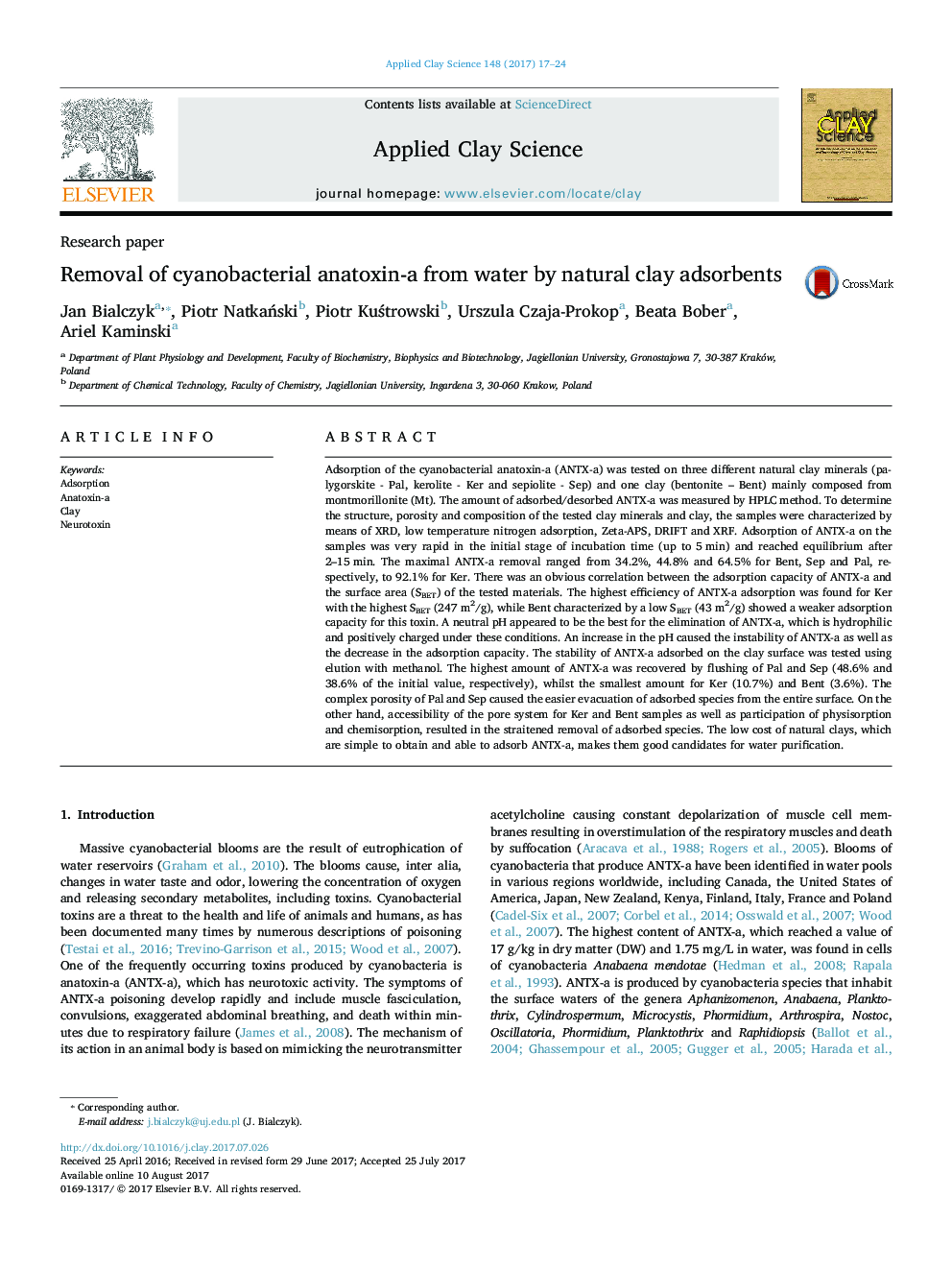| Article ID | Journal | Published Year | Pages | File Type |
|---|---|---|---|---|
| 5468522 | Applied Clay Science | 2017 | 8 Pages |
â¢Efficiency of cyanobacterial anatoxin-a (ANTX-a) adsorption on clays was tested.â¢The maximal ANTX-a removal from water was 92.1% for kerolite.â¢Adsorption of ANTX-a on clays reached equilibrium after 2-15 min.â¢It was found correlation between adsorption of toxin and properties of clays.â¢Neutral pH was found to be the best for ANTX-a adsorption on clays.
Adsorption of the cyanobacterial anatoxin-a (ANTX-a) was tested on three different natural clay minerals (palygorskite - Pal, kerolite - Ker and sepiolite - Sep) and one clay (bentonite - Bent) mainly composed from montmorillonite (Mt). The amount of adsorbed/desorbed ANTX-a was measured by HPLC method. To determine the structure, porosity and composition of the tested clay minerals and clay, the samples were characterized by means of XRD, low temperature nitrogen adsorption, Zeta-APS, DRIFT and XRF. Adsorption of ANTX-a on the samples was very rapid in the initial stage of incubation time (up to 5Â min) and reached equilibrium after 2-15Â min. The maximal ANTX-a removal ranged from 34.2%, 44.8% and 64.5% for Bent, Sep and Pal, respectively, to 92.1% for Ker. There was an obvious correlation between the adsorption capacity of ANTX-a and the surface area (SBET) of the tested materials. The highest efficiency of ANTX-a adsorption was found for Ker with the highest SBET (247Â m2/g), while Bent characterized by a low SBET (43Â m2/g) showed a weaker adsorption capacity for this toxin. A neutral pH appeared to be the best for the elimination of ANTX-a, which is hydrophilic and positively charged under these conditions. An increase in the pH caused the instability of ANTX-a as well as the decrease in the adsorption capacity. The stability of ANTX-a adsorbed on the clay surface was tested using elution with methanol. The highest amount of ANTX-a was recovered by flushing of Pal and Sep (48.6% and 38.6% of the initial value, respectively), whilst the smallest amount for Ker (10.7%) and Bent (3.6%). The complex porosity of Pal and Sep caused the easier evacuation of adsorbed species from the entire surface. On the other hand, accessibility of the pore system for Ker and Bent samples as well as participation of physisorption and chemisorption, resulted in the straitened removal of adsorbed species. The low cost of natural clays, which are simple to obtain and able to adsorb ANTX-a, makes them good candidates for water purification.
Graphical abstractDownload high-res image (157KB)Download full-size image
